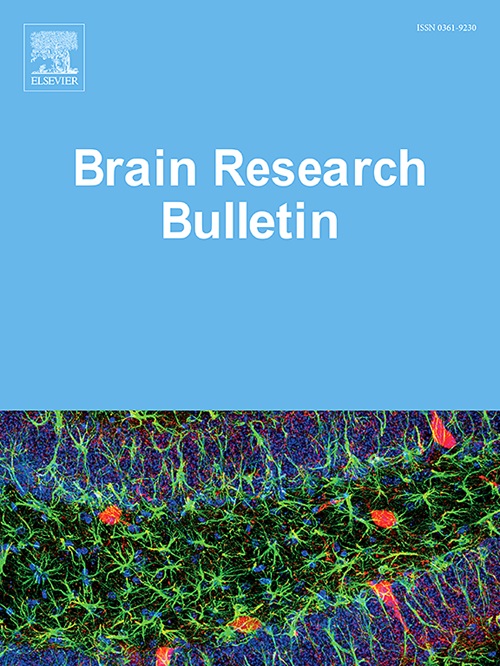电针通过调节sirt5介导的NEK7琥珀酰化抑制缺血性脑损伤神经元焦亡。
IF 3.5
3区 医学
Q2 NEUROSCIENCES
引用次数: 0
摘要
缺血性中风是全球死亡的主要原因。这种疾病的治疗不可避免地会导致再灌注,从而引发脑缺血再灌注损伤(IRI)和神经元焦亡。传统针刺的基础上发展而来的电针已被证明对改善脑IRI和焦亡有良好的作用。因此,本研究的目的是阐明电针在脑IRI中的作用机制。采用大脑中动脉闭塞(MCAO)模型诱导脑IRI。我们的研究结果显示,电针通过减轻脑损伤和阻止神经元焦亡来减轻MCAO小鼠的IRI。引人注目的是,我们发现电针引起琥珀酰化水平降低,SIRT5表达增强。然后,我们证明SIRT5的下调逆转了电针在脑梗死损伤和焦亡中的作用。机制上,SIRT5阻碍NEK7在K81位点的琥珀酰化修饰,下调其表达水平。最终,NEK7的过表达消除了电针对MCAO小鼠的影响。总之,本研究提供了令人信服的证据,表明电针通过sirt5依赖的方式去琥珀酰化NEK7,抑制神经元焦亡,减轻缺血性脑损伤。本文章由计算机程序翻译,如有差异,请以英文原文为准。
Electroacupuncture inhibits neuronal pyroptosis in ischemic brain injury through modulating SIRT5-mediated NEK7 succinylation
Ischemic stroke is a leading cause of global death. The treatment of this disease can inevitably result in reperfusion, thereby triggering cerebral ischemia-reperfusion injury (IRI) and neuronal pyroptosis. Electroacupuncture derived from traditional acupuncture has been proven to have favorable effects on ameliorating brain IRI and pyroptosis. Hence, the goal of the current research was to elucidate the mechanism governing electroacupuncture in cerebral IRI. We employed middle cerebral artery occlusion (MCAO) model to induce brain IRI. Our results revealed that electroacupuncture attenuated IRI in MCAO mice by minishing brain damage and hindering neuronal pyroptosis. Strikingly, it was discovered that electroacupuncture provoked the decrease of succinylation level and enhanced expression of SIRT5. Then, we demonstrated that knockdown of SIRT5 reversed the role of electroacupuncture in cerebral infarct injury and pyroptosis. In terms of mechanism, SIRT5 impeded the succinylation modification of NEK7 at K81 site to downregulate its expression level. Eventually, overexpression of NEK7 abrogated the impacts of electroacupuncture on MCAO mice. In conclusion, electroacupuncture restrained neuronal pyroptosis after cerebral ischemia via desuccinylating NEK7 in a SIRT5-dependent way.
求助全文
通过发布文献求助,成功后即可免费获取论文全文。
去求助
来源期刊

Brain Research Bulletin
医学-神经科学
CiteScore
6.90
自引率
2.60%
发文量
253
审稿时长
67 days
期刊介绍:
The Brain Research Bulletin (BRB) aims to publish novel work that advances our knowledge of molecular and cellular mechanisms that underlie neural network properties associated with behavior, cognition and other brain functions during neurodevelopment and in the adult. Although clinical research is out of the Journal''s scope, the BRB also aims to publish translation research that provides insight into biological mechanisms and processes associated with neurodegeneration mechanisms, neurological diseases and neuropsychiatric disorders. The Journal is especially interested in research using novel methodologies, such as optogenetics, multielectrode array recordings and life imaging in wild-type and genetically-modified animal models, with the goal to advance our understanding of how neurons, glia and networks function in vivo.
 求助内容:
求助内容: 应助结果提醒方式:
应助结果提醒方式:


